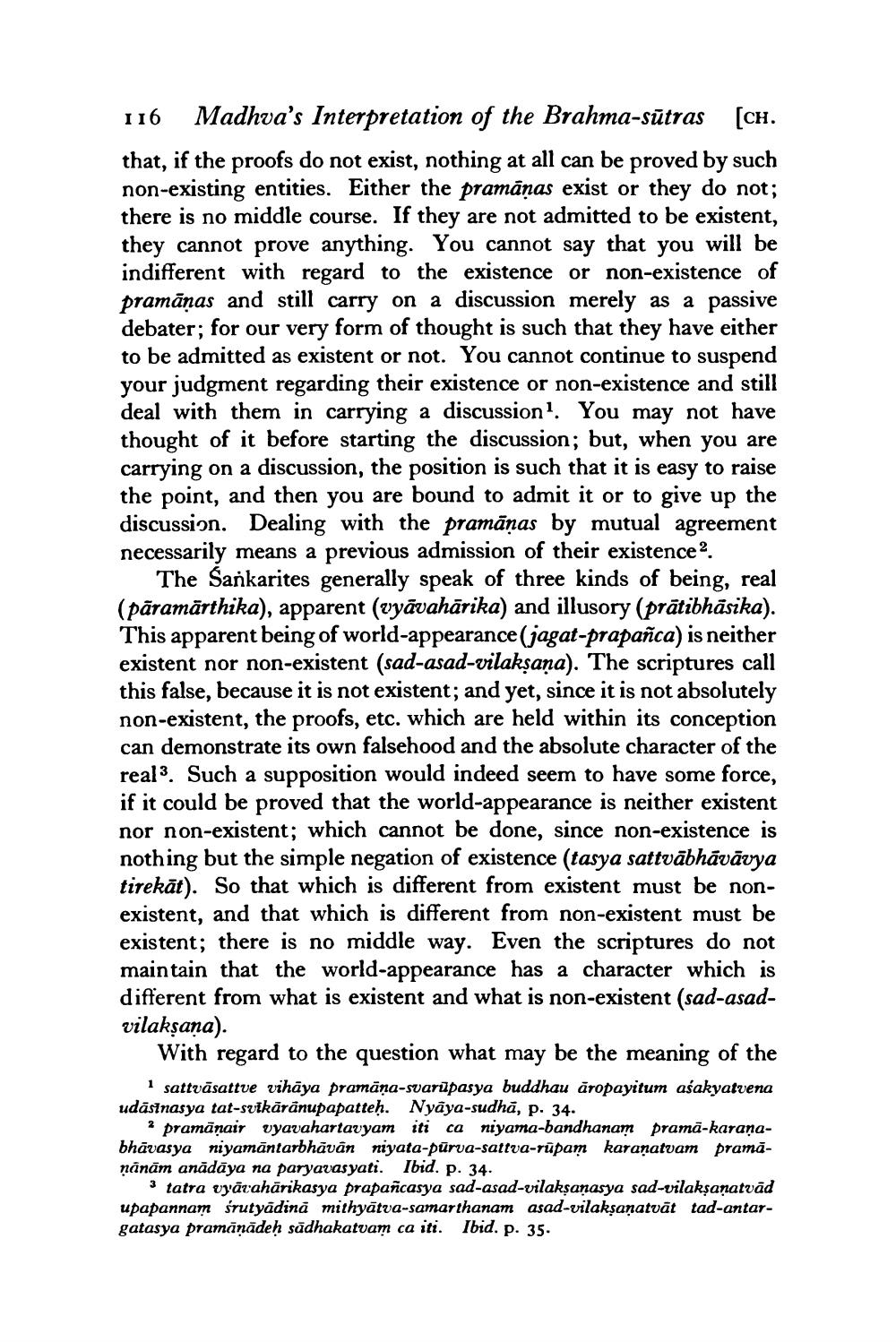________________
116 Madhva's Interpretation of the Brahma-sūtras [CH. that, if the proofs do not exist, nothing at all can be proved by such non-existing entities. Either the pramānas exist or they do not; there is no middle course. If they are not admitted to be existent, they cannot prove anything. You cannot say that you will be indifferent with regard to the existence or non-existence of pramāṇas and still carry on a discussion merely as a passive debater; for our very form of thought is such that they have either to be admitted as existent or not. You cannot continue to suspend your judgment regarding their existence or non-existence and still deal with them in carrying a discussion? You may not have thought of it before starting the discussion; but, when you are carrying on a discussion, the position is such that it is easy to raise the point, and then you are bound to admit it or to give up the discussion. Dealing with the pramānas by mutual agreement necessarily means a previous admission of their existence?
The Sankarites generally speak of three kinds of being, real (pāramārthika), apparent (vyāvahārika) and illusory (pratibhāsika). This apparent being of world-appearance (jagat-prapañca) is neither existent nor non-existent (sad-asad-vilaksana). The scriptures call this false, because it is not existent; and yet, since it is not absolutely
ofs, etc. which are held within its conception can demonstrate its own falsehood and the absolute character of the reals. Such a supposition would indeed seem to have some force, if it could be proved that the world-appearance is neither existent nor non-existent; which cannot be done, since non-existence is nothing but the simple negation of existence (tasya sattvābhāvāvya tirekāt). So that which is different from existent must be nonexistent, and that which is different from non-existent must be existent; there is no middle way. Even the scriptures do not maintain that the world-appearance has a character which is different from what is existent and what is non-existent (sad-asadvilaksana).
With regard to the question what may be the meaning of the
1 sattvāsattve vihāya pramāna-svarūpasya buddhau áropayitum asakyatvena udāstnasya tat-svikārānupapatteh. Nyāya-sudhā, p. 34.
? pramānair vyavahartavyam iti ca niyama-bandhanam prama-karanabhāvasya niyamantarbhāvān niyata-pūrva-sattva-rupam karanatvam pramaņānām anādāya na paryavas yati. Ibid. p. 34.
3 tatra vyātahārikasya prapancasya sad-asad-vilaksanasya sad-vilaksanatvad upapannam śrutyādină mithyātva-samarthanam asad-vilaksanatvāt tad-antargatasya pramāņādeh sādhakatvam ca iti. Ibid. p. 35.




